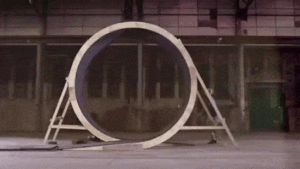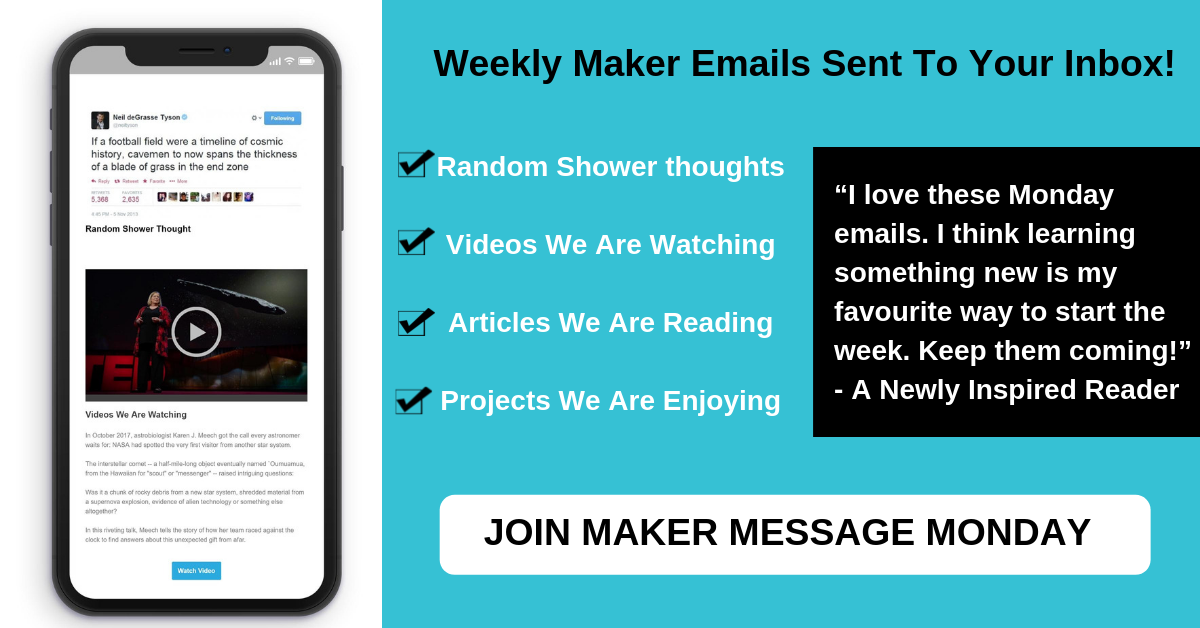Maker Message Monday!
Hi All!
Here is your weekly dose of “Maker Message Monday”, a list of what we are enjoying or pondering as Makers!
Random Shower Thoughts
“Damian Walter is the first human to do the loop on foot. To run it without falling, you need to reach the right speed; then, centrifugal forces will keep you locked on the track. Note how his shoulder line stays dead center of the loop.
For this particular one, Damian needed to accelerate up to 8.65 mph in the highest point to be able to gain enough inertia as to rotate his body and legs around his head fast enough, so when gravity finally wins, he’s already feet down on the track. The full video is part of a Pepsi promotional campaign. ”
Videos We Are Watching
How SpaceX Lands Rockets With Astonishing Accuracy
SpaceX has revolutionized rocket engineering and space travel.
They first announced their goals for reusable rockets in 2011.
Since then they have had 60 successful launches and 30 successful landings and a 100% success rate until December 2018.
The rocket stands 70m high and weighs 500,000 kg, and lands itself on a 50m wide landing pad.
Since 2013, there has been a 1000x improvement in the landing accuracy (within 10 km radius).
Want to learn how a company can step into the industry and change the way in which things are done?
Watch this video of the week from “Art Of Engineering” on Youtube!
Articles We Are Reading
The Edtech Buying Process Is Broken. ISTE Says Teachers Can Fix It.
It seems like every day there is a new app or platform being developed to help teachers.
“As a result, districts today are using an average of 548 edtech apps per month.”
This guide by Edsurge outlines 5 key areas for districts and educators to consider before making a purchase.
- Alignment with students learning goals and standards
- Importance of research and evidence
- Data interoperability and student privacy
- Challenges of implementation, use, and ongoing support
- Educators as purchasing partners
Popularity is not the same thing as effectiveness,” says South. “It’s really important that educators… are equipped to take a deeper dive and really look at those solutions, see whether they are based on principles of learning science or if there is third-party verification of their efficacy claims.”
Read the full article by Edsurge here.
Projects We Are Enjoying
Gesture Controlled Maze
Ever play with a pencil maze while you are out to eat waiting for your dinner?
Now imagine instead of a pencil you could use gestures!
SuperSid became inspired and decided to build a labyrinth maze game using gestures or mobile.
SuperSid says
- It is simple and easy to build
- It is cheap and needs a few electronic parts
- Detachable magnetic maze.
- Easy to customize
- So much fun to build it and play with it.
“The Maze is controlled via a wearable band as well as a Bluetooth app developed using MIT App Inventor. The gyroscope sensor data from the band is transmitted through the WiFi connection to the Wemos D1 Mini device (esp8266) which controls the servos that tilt the maze. You can also control the maze using an android app. Android app is created with the MIT App Inventor2. This gadget requires less components. It is easy to build.”
Read the full tutorial by SuperSid here.
Podcasts We Are Listening To
Why Is Our Galaxy Warped?
Our galaxy isn’t a flat disk — it’s warped like melted vinyl record. Learn how researchers discovered this and why they think it happened in today’s episode of BrainStuff.

Join Maker Message Monday to receive more videos and articles like this every Monday in your Inbox!





